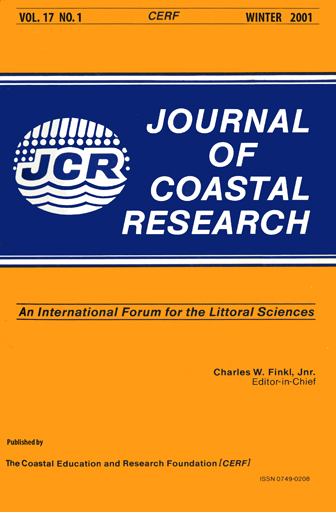Topography and flooding of Coastal Ecosystems on the Yukon-Kuskokwim Delta, Alaska: Implications for Sea-Level Rise
Keywords:
Arctic, delta, surface elevations, GPS, sedimentation, flooding, sea-level change.Abstract
We measured surface elevations, stage of annual peak flooding, and sedimentation along 10 toposequences across coastal ecosystems on the Yukon-Kuskokwim (Y-K) Delta in western Alaska during 1994-1998 to assess some of the physical processes affecting ecosystem distribution. An ecotype was assigned to each of 566 points, and differences in elevations among 24 ecotypes were analyzed within individual toposequences and across the 40 X 40-km study area. Elevations of vegetated ecotypes along the longest toposequence rose only ~ 1 m over a distance of 7.5 km, and mean elevations of most ecotypes across the study area were within 0.5 m of mean higher-high water (1.47 m), During 1994 to 1998, monitoring of annual peak stage using crest gauges revealed flooding from the highest fall storm surge reached 2.58 m (1.11 m above mean higher-high tide). In each year, only the highest surface was unaffected by flooding. Mean annual sedimentation rates for the various ecotypes were 8.0 mm/y on tidal flats, 1.4 to 3.8 mm/y on the active floodplain, 0.1-0.2 mm/y on the inactive floodplain, and 0 mm/y on the abandoned floodplain. If sea levels in the Bering Sea rise ~0.5 m by 2100, as predicted by some on a global basis, large portions of the coastal margin of the delta could be regularly inundated by water during high tides, and even the highest ecotypes could be affected by storm surges. Predicting the extent of future inundation is difficult, however, because of the changes in the ground surface elevation through sedimentation, organic matter accumulation, and permafrost development.Downloads
Published
2001-01-11
Issue
Section
Articles


